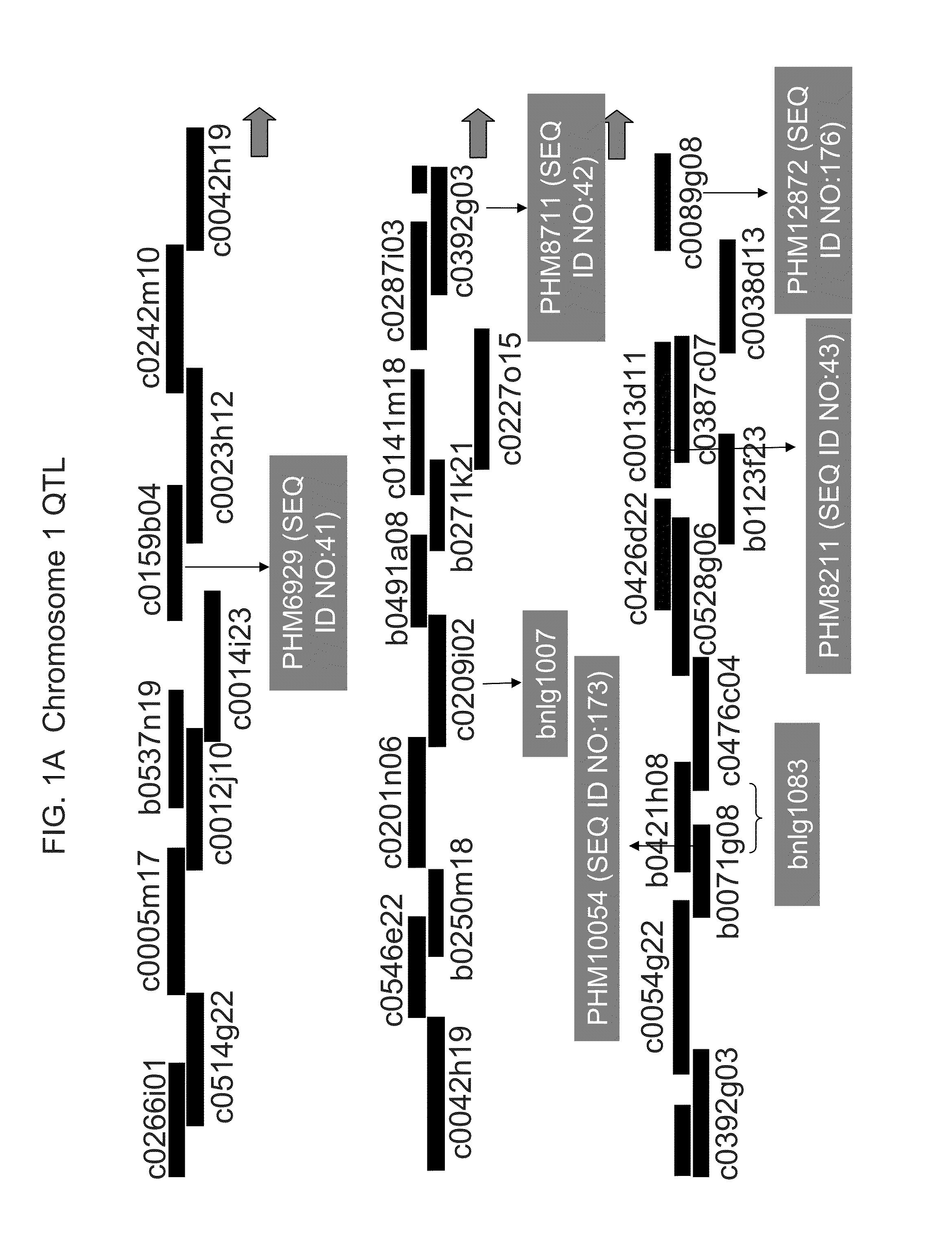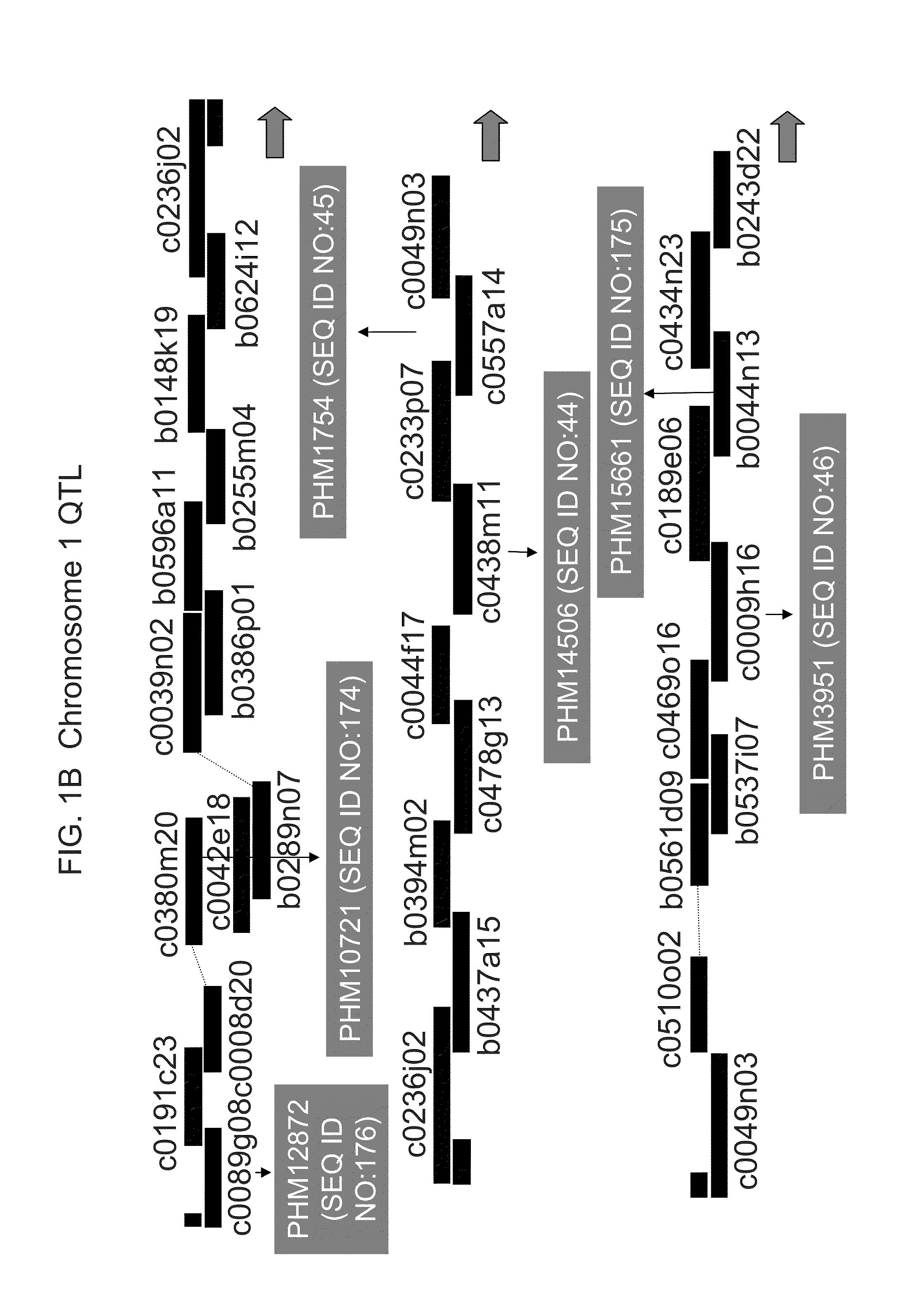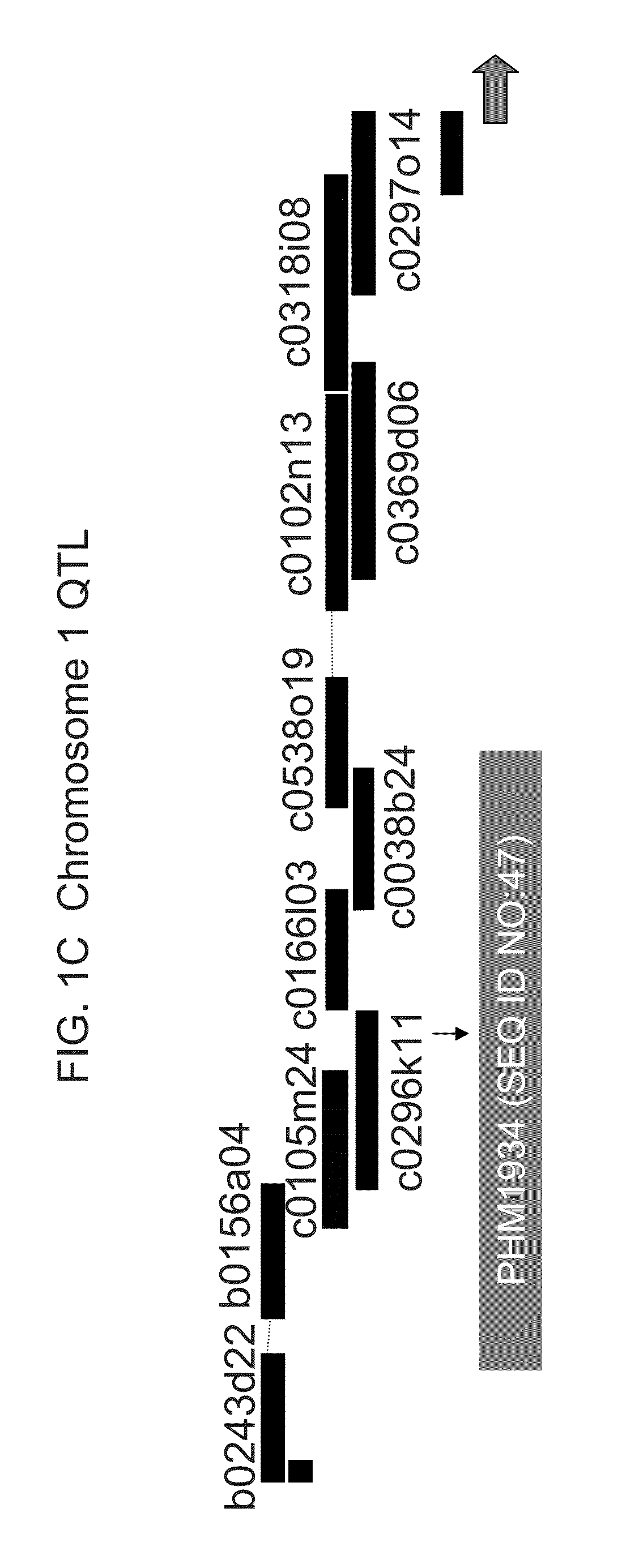Genetic loci associated with fusarium ear mold resistance in maize
a technology of maize and ear mold, applied in the field of gene loci associated with fusarium ear mold resistance in maize, can solve the problems of time-consuming and difficult use of phenotypic selection to introgress resistance, affecting both grain yield and quality, and affecting the incorporation of this resistance in maize inbred lines. , to achieve the effect of enhancing fusarium ear mold resistan
- Summary
- Abstract
- Description
- Claims
- Application Information
AI Technical Summary
Benefits of technology
Problems solved by technology
Method used
Image
Examples
example 1
Mapping of Large Effect QTLs for Fusarium Ear Mold Resistance
Mapping Population
[0391]A mapping population consisting of 360 F7:8 recombinant inbred lines (RILs) was derived from a cross between PHG61, a highly resistant line in the non-stiff stalk group, and 1047, a susceptible stiff stalk inbred. (FIG. 3 shows a comparison between ears from resistant line PHG61 and ears from susceptible line 1047). Sequential selfing of the families was done in non-selective environments. Usually the first five plants in each row were selfed and ears from the two plants closest to the center of the row were harvested. Naturally, some lines producing barren ears were lost.
[0392]DNA was extracted from lyophilized leaf samples of F7:8 seedlings, and genotypic data was collected at each of 533 AFLP markers, covering a total of 1380.6 cM, with an average distance between markers of 2.6 cM.
Phenotyping
[0393]Lines in the RIL population were evaluated for visual ear mold under natural infection co...
example 2
Validation and Fine Mapping of QTL1 and QTL6
[0395]In order to test the effect and utility of the QTLs identified, near isogenic lines (NILs) were developed in three susceptible genetic backgrounds: 1047 (described above), PH24E, and PH1BC. PHG61 has a historical Fusarium ear mold score of 8-9 (based on the 1-9 scale); while 1047, PH24E, and PH1BC have historical scores of 3-4, 4.0, and 5.0.
[0396]RILs from Example 1 that carried QTL1 or QTL6 were crossed back to the original susceptible parent 1047 twice, followed by sequential selfing for 3 generations, thereby creating BC3S3 lines.
[0397]NILs were also generated by crossing the resistant parent PHG61 to two other susceptible inbreds (PH24E and PH1BC). For each cross, individuals of the F1 population were backcrossed to the respective recurrent parent to generate a BC2 population, and sequential selfing of the BC2 families was then performed for 3 generations.
[0398]Marker assisted selection (MAS) was used in the development of the NI...
example 3
Elite Inbred Conversions
[0401]Despite housing resistance alleles for Fusarium ear mold, PHG61 is a poor performer agronomically. As a result, a number of elite inbreds were “converted” to have enhanced resistance to Fusarium ear mold through the introgression of QTL1 and / or QTL6 from PHG61. The conversions could then be used by breeders to move the QTL(s) from PHG61 into their breeding germplasm. Conversions were made of the elite inbreds PHCA5, PH51H, PH70R, PH87H, PHFCJ, PH890, and PHB1V by crossing PHG61 (the donor parent) to each respective inbred (the recurrent parents). The progeny were then backcrossed to the recurrent parent five times and then selfed for three generations. In each BC population, SSR markers were used to select for the QTL regions. Selections for QTL1 were made using bnlg1007 (SEQ ID NOs:21 and 22), bnlg1083 (SEQ ID NOs:23 and 24) and PHI256546 (SEQ ID NOs:25 and 26), and selections for QTL6 were made using bnlg1174 (SEQ ID NOs:27 and 28) and umc1805 (SEQ ID...
PUM
 Login to View More
Login to View More Abstract
Description
Claims
Application Information
 Login to View More
Login to View More - R&D
- Intellectual Property
- Life Sciences
- Materials
- Tech Scout
- Unparalleled Data Quality
- Higher Quality Content
- 60% Fewer Hallucinations
Browse by: Latest US Patents, China's latest patents, Technical Efficacy Thesaurus, Application Domain, Technology Topic, Popular Technical Reports.
© 2025 PatSnap. All rights reserved.Legal|Privacy policy|Modern Slavery Act Transparency Statement|Sitemap|About US| Contact US: help@patsnap.com



